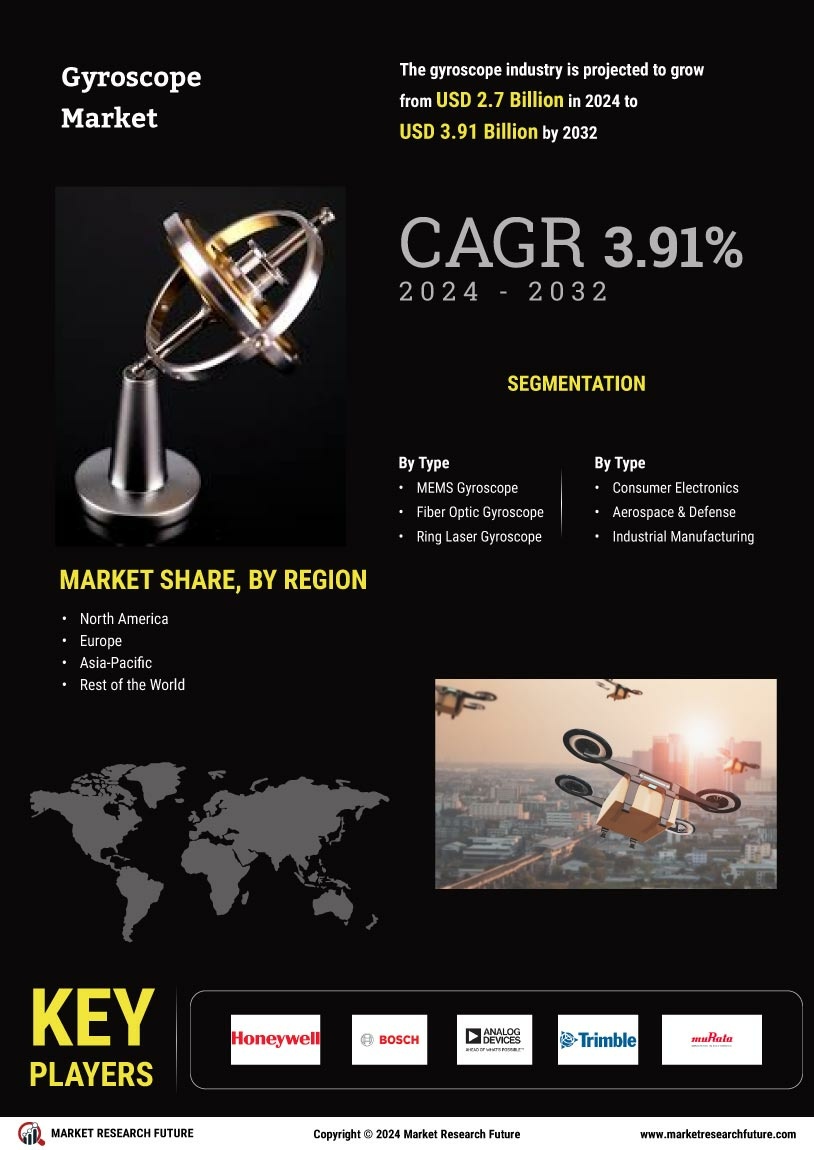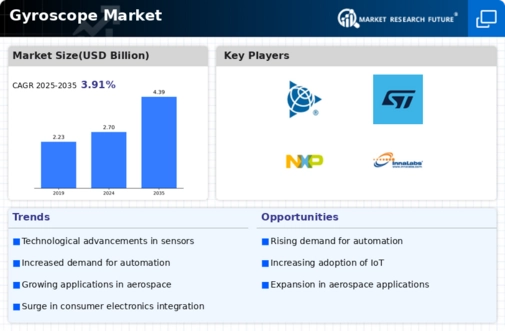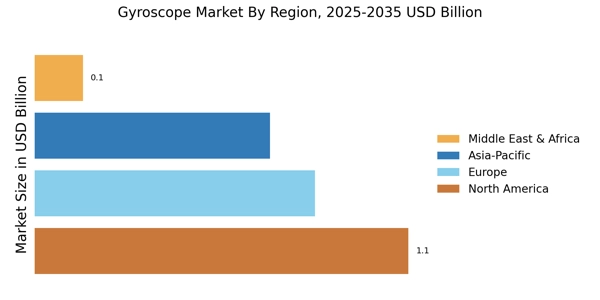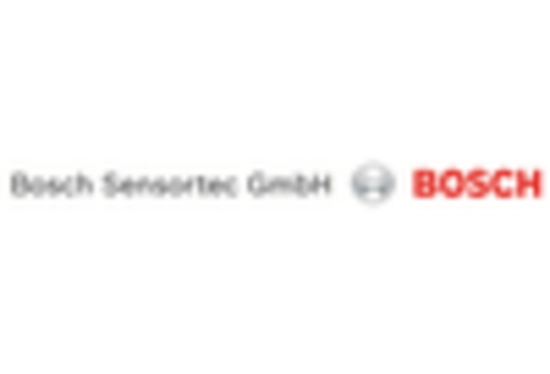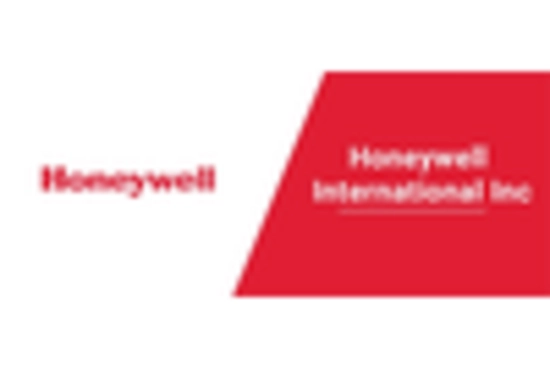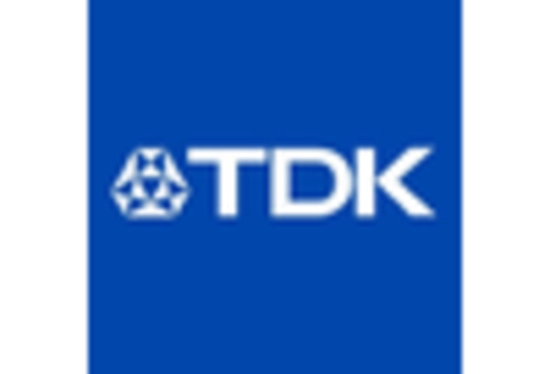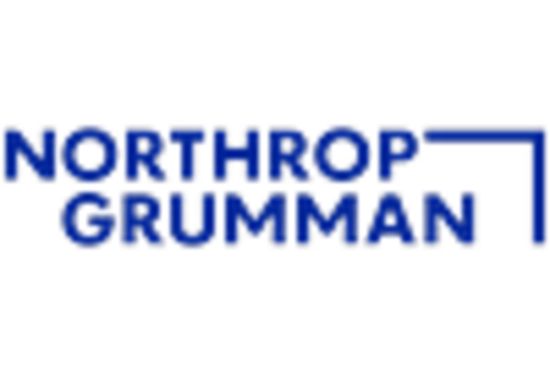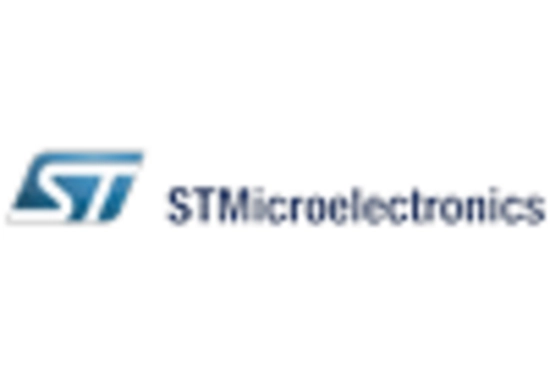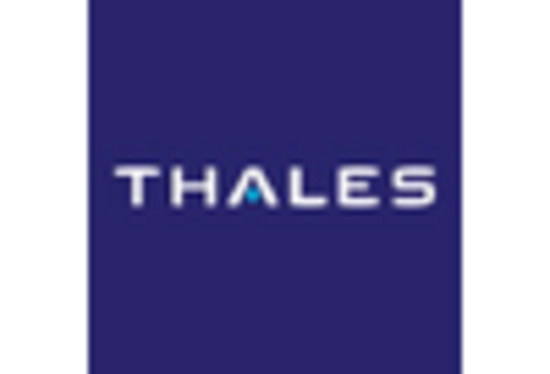Advancements in Sensor Technology
Technological advancements in sensor technology are significantly influencing the Gyroscope Market. The development of micro-electromechanical systems (MEMS) gyroscopes has led to smaller, more efficient, and cost-effective solutions. These innovations enable the integration of gyroscopes into a wider array of applications, from smartphones to drones. The MEMS gyroscope market is expected to witness substantial growth, with estimates suggesting a market size exceeding USD 2 billion by 2026. This trend indicates a shift towards more compact and versatile gyroscopic solutions, which could enhance the performance of various devices. As sensor technology continues to evolve, the Gyroscope Market is likely to benefit from increased adoption across consumer electronics and industrial applications.
Emerging Applications in Healthcare
The Gyroscope Market is witnessing emerging applications in the healthcare sector, particularly in medical devices and surgical instruments. Gyroscopes are increasingly utilized in robotic-assisted surgeries, where precision and stability are paramount. The global market for surgical robots is projected to exceed USD 20 billion by 2025, indicating a growing reliance on gyroscopic technology in this field. Additionally, wearable health devices that monitor movement and orientation are becoming more prevalent, further driving the demand for gyroscopes. As healthcare technology continues to advance, the Gyroscope Market is likely to see increased adoption of gyroscopic solutions, enhancing the capabilities of medical devices and improving patient outcomes.
Increased Focus on Navigation Systems
The Gyroscope Market is benefiting from an increased focus on navigation systems across various sectors, including automotive, aerospace, and maritime. As the demand for advanced navigation solutions rises, gyroscopes play a crucial role in providing accurate orientation and stabilization. The automotive navigation systems market is expected to grow significantly, with estimates suggesting a market size of over USD 40 billion by 2027. This growth is likely to be driven by the increasing adoption of autonomous vehicles, which rely heavily on gyroscopic technology for precise navigation. Consequently, the Gyroscope Market is expected to expand as more industries recognize the importance of reliable navigation systems.
Rising Demand for Robotics and Automation
The Gyroscope Market is experiencing a notable surge in demand due to the increasing integration of robotics and automation across various sectors. Industries such as manufacturing, logistics, and healthcare are increasingly adopting robotic systems that require precise orientation and stabilization, which gyroscopes provide. According to recent data, the robotics market is projected to grow at a compound annual growth rate of over 20% in the coming years. This growth is likely to drive the demand for gyroscopes, as they are essential components in robotic navigation and control systems. As companies seek to enhance operational efficiency and reduce human error, the reliance on gyroscopic technology in automated systems appears to be a key driver for the Gyroscope Market.
Growing Interest in Augmented and Virtual Reality
The Gyroscope Market is poised for growth due to the rising interest in augmented reality (AR) and virtual reality (VR) technologies. These applications require precise motion tracking and orientation, which gyroscopes facilitate. The AR and VR market is projected to reach USD 300 billion by 2025, indicating a robust demand for gyroscopic components. As developers seek to create immersive experiences, the integration of gyroscopes in headsets and other devices becomes increasingly critical. This trend suggests that the Gyroscope Market will likely see a significant uptick in demand as AR and VR technologies continue to gain traction in gaming, education, and training sectors.
